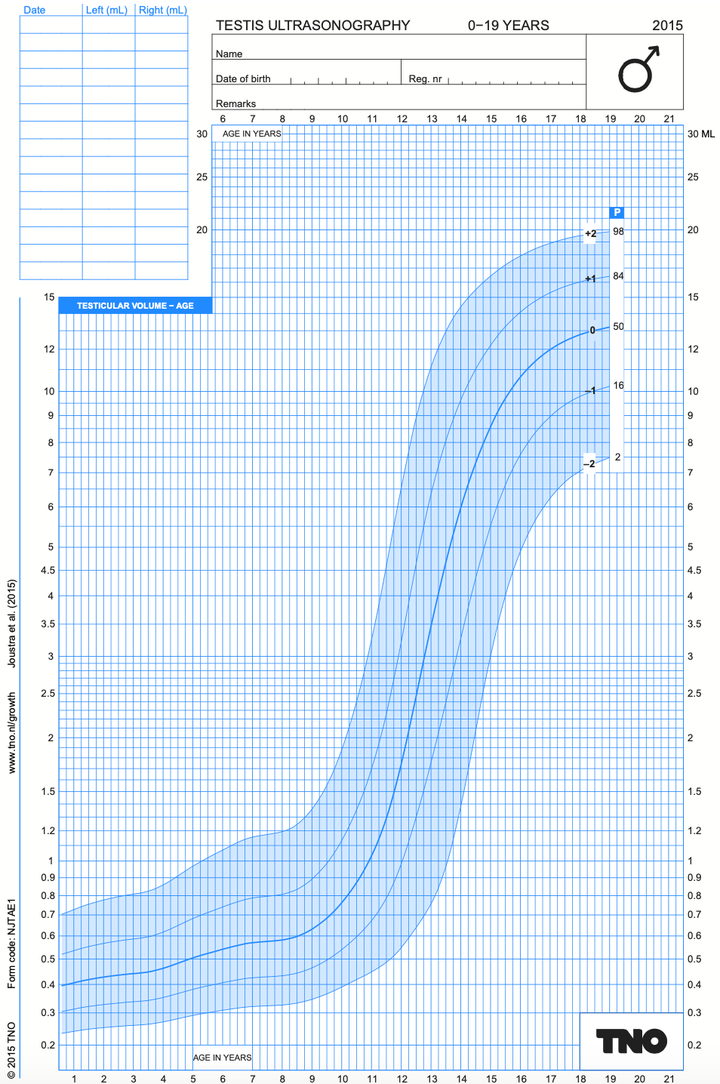New reference charts for testicular volume in Dutch children and adolescents allow the calculation of standard deviation scores

Abstract
Aim: Accurate calculations of testicular volume standard deviation (SD) scores are not currently available. We constructed LMS-smoothed age-reference charts for testicular volume in healthy boys. Methods: The LMS method was used to calculate reference data, based on testicular volumes from ultrasonography and Prader orchidometer of 769 healthy Dutch boys aged 6 months to 19 years. We also explored the association between testicular growth and pubic hair development, and data were compared to orchidometric testicular volumes from the 1997 Dutch nationwide growth study. Results: The LMS-smoothed reference charts showed that no revision of the definition of normal onset of male puberty – from nine to 14 years of age – was warranted. In healthy boys, the pubic hair stage SD scores corresponded with testicular volume SD scores (r = 0.394). However, testes were relatively small for pubic hair stage in Klinefelter’s syndrome and relatively large in immunoglobulin superfamily member 1 deficiency syndrome. Conclusion: The age-corrected SD scores for testicular volume will aid in the diagnosis and follow-up of abnormalities in the timing and progression of male puberty and in research evaluations. The SD scores can be compared with pubic hair SD scores to identify discrepancies between cell functions that result in relative microorchidism or macroorchidism.